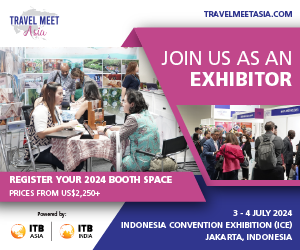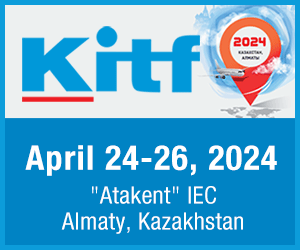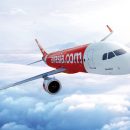
In an exclusive interview with Travel And Tour World, Daniela Pomarés, CEO, GEGO, shares her expertise and opinion on the Internet of Things (IoT), which is changing the way we travel and interact with the world. This IoT helps the businesses with day-to-day operations while offering a better customer experience for leisure and MICE travellers.
Travel And Tour World: How the Internet of Things (IoT) is enhancing the travel and tourism industry?
Daniela Pomarés: The Internet of Things (IoT) is having a significant impact on the travel and tourism industry, providing a range of benefits for both businesses and customers. Here are some ways IoT is enhancing the travel and tourism industry:
Smart hotels: IoT technology can be used to create smart hotels that provide a more personalized experience for guests. Smart hotel rooms can adjust lighting, temperature, and entertainment preferences based on a guest’s preferences, making their stay more comfortable.
Smart airports: IoT technology can be used to create smart airports that provide a more seamless and efficient travel experience for passengers. For example, sensors can be used to monitor security lines and adjust staffing levels accordingly to reduce wait times.
Personalized travel experiences: IoT technology can be used to provide travelers with personalized experiences, such as customized itineraries and recommendations based on their interests and travel history.
Baggage tracking: IoT sensors can be placed in luggage to track its location in real-time, allowing travelers to easily locate their bags at any point during their journey.
Overall, the Internet of Things is transforming the travel and tourism industry by providing businesses with new ways to enhance the customer experience, optimize operations, and increase efficiency.
Travel And Tour World: How Internet of Things (IoT) is assisting in improving more customer experience during traveling?
Daniela Pomarés: The Internet of Things (IoT) is playing a significant role in improving customer experience during traveling in various ways. IoT sensors can be used to gather data about a traveler’s preferences, behavior, and habits, which can then be used to personalize their experience.
Also IoT sensors can be used to gather real-time feedback from travelers. This can help businesses identify areas for improvement and make necessary changes quickly.
IoT sensors can be used to track luggage in real-time, allowing travelers to know exactly where their bags are at any given time. This can help reduce stress and anxiety for travelers who are worried about lost or delayed baggage.
Location-based services that use IoT technology can provide travelers with personalized recommendations for nearby restaurants, attractions, and events based on their current location.
Overall, the Internet of Things is helping businesses in the travel and tourism industry to create a more personalized, efficient, and seamless experience for travelers, enhancing customer experience and satisfaction.
Travel And Tour World: How Internet of Things (IoT) can streamline airport services?
Daniela Pomarés: The Internet of Things (IoT) can be used to streamline airport services in various ways.
Overall, the Internet of Things can help airports to streamline their services and improve the overall travel experience for passengers, from check-in to boarding and beyond.
IoT sensors can be used to monitor security lines in real-time, allowing airports to adjust staffing levels and resources as needed to reduce wait times.
Automated check-in: IoT sensors can be used to automate the check-in process, reducing wait times and improving efficiency.
Smart boarding systems: IoT sensors can be used to monitor the boarding process and optimize it in real-time. This can help reduce boarding times and improve the overall travel experience.
Predictive maintenance: IoT sensors can be used to monitor the condition of airport equipment and facilities, allowing maintenance crews to address issues before they become major problems. This can help reduce downtime and improve the overall efficiency of airport services.
Travel And Tour World: How RTLS (Real-Time Locating Systems) technology works and what are the benefits?
Daniela Pomarés: Nearly everyone has used some kind of locating tech in the form of a typical GPS on a smartphone. But when it comes to tracking any object you can imagine, including medical equipment, cars, or luggage, using a GPS system generally isn’t enough.
That’s because GPS has limits on accuracy and precision, and generally works best outdoors. While a GPS might help you to locate an object within a city or even within a street with reasonable accuracy, it will have trouble locating an object within a specific building or a specific room in real time.
By contrast, most RTLS options prioritize tracking items both indoors and outdoors with high accuracy. They might use Bluetooth for low-range applications within a building. They could also use 4G or 5G technologies for global real-time tracking that can narrow down the position of an item much more precisely than a typical GPS tracker.
Regardless of the protocol it uses, any RTLS will generally consist of a few essential parts. The first are tags that produce a location signal of some kind. Such tags usually operate on battery power and are small enough to attach to virtually any object. Then you need a receiver to track all of those signals and send the data along to a central software system. The software should allow you to view all of the objects you’re tracking in real time.
Many of us use smart watches, smart headphones, fitness trackers, and the like. It’s fairly easy to lose all of these small devices, and you’ve probably found yourself spending a lot of time searching for them each morning. With RTLS, you could track any of these objects from your phone. You could determine in seconds exactly where these items are within your house, and if your chosen RTLS has global tracking, you can even determine whether you left a smart device at a friend’s house, on your desk at work, or at the airport you just departed from.
Also, consider the uses of RTLS in travel. Most people who travel frequently have experienced misplaced luggage, often through no fault of their own. Airports are notorious for misplacing baggage. Through RTLS, implemented in GPS Trackers like Gego, you can keep track of your luggage anywhere in the world, which is an especially important function as the airline industry continues to recover from staffing shortages and unusually bad weather.
Travel And Tour World: Share with us about Gego.
Daniela Pomarés: GEGO is leading innovation in the IoT space as leaders in software-based RTLS (Real-Time Locating Systems) solutions, pioneers in Smart Luggage, and as #1 market leader in luggage tracker hardware and software. GEGO’s simple API or SDK architecture provides enterprises scalable solutions for tracking the location of travel bags and other high-value assets.
We invented LUGLOC, the first luggage tracker; an innovative geo-tracking solution that combines a device with an app, to locate bags anywhere in the world. Knowing where your belongings are, will make your travels more enjoyable. Tracking and not worrying is the smartest way to travel and upgrade the luggage you already own.
Travel And Tour World: Share with us about the journey of Gego- from luggage tracker to universal tracking
Daniela Pomarés: LugLoc’s development began in 2012 but it wasn’t until early 2015 when it was ready to scale. That year LugLoc signed agreements with top-tier luggage brands like Samsonite and Delsey for creating the first “smart luggage” that would be able to tell you where your luggage was in real time.
LugLoc also was praised by the press all over the world, with outlets like CNN naming it a “groundbreaking travel accessory” or NBC who said it was “the best travel hack”. The value proposition was so strong that even Big Box Retailers like Bed, Bath & Beyond carry LugLoc amongst their travel accessories.
From 2015 to 2018, LugLoc and the team learned a lot about how tracking technology works and especially how users want to interact with tracking devices. So we set out to create a more robust and broader scoped solution: GEGO.
GEGO was born out of the ambition for LugLoc to move beyond luggage tracking into Universal Tracking. By incorporating all the learning from those 3 years of operation, and also applying the latest tracking technologies. GEGO was created to help our users find anything they care about.
In 2022, we launched GEGO GPS, incorporating GPS technology for the first time. We specialize in assisting travelers by providing assistance in case of lost luggage, offering useful information and, above all, the global location precision our clients demand.
GEGO is the only GPS that sends SMS alerts when your luggage arrives at an airport worldwide. That means that even without having an internet connection, you will be informed of the location of your suitcase in any part of the world. We have many cases in which our clients are the ones who provide the exact location of their bags to the airline thanks to GEGO.
We continue to add new benefits for our clients, who will soon have access to an exclusive luggage recovery service in case of loss. The main idea is to help our clients not only to know the location of their bags but also to speed up the recovery process in case the airline loses it. Our main goal is to become the top-of-mind luggage tracker in the world.
Thursday, April 25, 2024
Wednesday, April 24, 2024
| Cookie | Duration | Description |
|---|---|---|
| cookielawinfo-checkbox-analytics | 11 months | This cookie is set by GDPR Cookie Consent plugin. The cookie is used to store the user consent for the cookies in the category "Analytics". |
| cookielawinfo-checkbox-functional | 11 months | The cookie is set by GDPR cookie consent to record the user consent for the cookies in the category "Functional". |
| cookielawinfo-checkbox-necessary | 11 months | This cookie is set by GDPR Cookie Consent plugin. The cookies is used to store the user consent for the cookies in the category "Necessary". |
| cookielawinfo-checkbox-others | 11 months | This cookie is set by GDPR Cookie Consent plugin. The cookie is used to store the user consent for the cookies in the category "Other. |
| cookielawinfo-checkbox-performance | 11 months | This cookie is set by GDPR Cookie Consent plugin. The cookie is used to store the user consent for the cookies in the category "Performance". |
| viewed_cookie_policy | 11 months | The cookie is set by the GDPR Cookie Consent plugin and is used to store whether or not user has consented to the use of cookies. It does not store any personal data. |






















